Articles of 2006
Shane and Fernando: It’s Not About Black vs. Brown
Oxnard’s prideful Fernando Vargas meets Sugar Shane Mosley as Mexican-American battles African-American for junior middleweight bragging rights at the MGM Grand Hotel and Casino in Las Vegas on Saturday.
In the last three decades the emergence of the Mexican-American fighter led recently by Vargas and others has created point and counterpoint for the boxing world that has seen the decline of other nationalities in prizefighting. But Black fighters remain a force in the sport.
Mosley, 34, an African-American fighter from the racially mixed neighborhood of Pomona, has reigned for years as one of the preeminent fighters of the world.
Vargas, a Mexican-American boxer whose family migrated from Michoacan, Mexico to the farmlands of Oxnard, emerged as a cock of the walk type of fighter who caught the interest of thousands of boxing fans that prefer his macho style and attitude. Punctuate attitude because Vargas has plenty of it.
“He’s kind of a bully,” said Mosley while having lunch at a posh Italian restaurant in Pasadena. “Fernando is like Mike Tyson, they scare opponents and beat them before they even get in the ring. But if you’re not scared, then it’s just another fight and they’re in trouble.”
In their first encounter that took place in February 25, Vargas and Mosley battered each other silly from round to round. A large knot on the side of Vargas left eye forced the referee to stop the contest in the 10th round giving Mosley the victory. According to the scorecards of the three judges, it was a close fight.
“Think what would have happened if I had two eyes,” said Vargas, 28, who is finally gaining a rematch after failing to do so against Felix Trinidad and Oscar De La Hoya. “There’s no doubt in my mind that I’m going to win this time.”
Both African-American and Mexican-American boxers have emerged in the world of boxing as two primary forces behind the sport. In the past, a multitude of various nationalities such as Irish, Italian, Jewish and others filled the thousands of boxing gyms throughout the country back in the early 1900s to the 1950s. Not anymore.
“Boxing is for hungry fighters. It’s for people that don’t have anything,” said Benny Georgino, a former boxer himself during the Depression era in Los Angeles. “Now, only the Blacks and Mexicans are hungry in this area.”
Other ethnic groups existed in the Los Angeles area but slowly disappeared from the boxing scene.
“There used to be a lot of Filipino fighters in downtown Los Angeles. They used to live by the Union Station,” said Leonard Castillon, 90, who saw some of the great Filipino fighters of the 1920s and 1930s. “Speedy Dado was a real good fighter in those days.”
Today, Blacks and Latinos dominate boxing in the Southern California area. Mosley and Vargas along with De La Hoya have emerged from the area as the worldwide leaders of boxing since the early 1990s.
“Vargas came out of the Olympic team in 1996 and won the junior middleweight title faster than anyone in history,” said Rolando Arrellano, who co-manages Vargas with Shelly Finkel.
Meanwhile, Mosley was unsuccessful in gaining a spot on the 1992 Olympic team that competed in Barcelona. Instead, his current co-partner in Golden Boy Promotions – that is promoted this fight in Las Vegas – won the gold medal and raced to riches.
“For the longest time Shane Mosley was one of the best fighters, but nobody knew who he was. But other fighters knew,” said De La Hoya.
After Mosley beat De La Hoya in 2000, he quickly gained the fame that eluded him for almost eight years. Now the smiling green-eyed Mosley has become a fan favorite among all ethnic groups, not just African-American fans.
“He’s just a nice guy,” said De La Hoya describing his former foe a year ago. “People like nice guys like Mosley.”
Followers of Vargas file into Las Vegas in droves whenever the “Ferocious One” appears on a fight card.
“I’m just thankful for my fans,” said Vargas, whose popularity among the first and second generation Mexicans and Latinos has gained him a secure place among fighters that have a good track record in attracting large number of viewers for pay-per-view televised fights and at the arenas. “They’ve been with me through thick and thin.”
Why do fans like Vargas?
“I would rather die on my shield than quit,” said Vargas during a press conference in Los Angeles.
Even Mosley knows this.
“Vargas is tenacious,” says Mosley after thinking about what makes his opponent so tough. “He’s not real fast and he doesn’t hit as hard as De La Hoya, but he won’t quit.”
Though Mosley was reared in Pomona, it’s a quick drive from Los Angeles where he gained experience with legendary sparring sessions against primarily Latino fighters in the tough gyms of East L.A. and South-Central L.A.
In the past, black fighters rarely had many Latino fans. Mosley is one of those few African-American fighters who have a strong Latino following.
“I think they like me because I come to fight and put on a good show,” said Mosley.
So when Mosley and Vargas meet each other inside the ring, don’t be surprised by their wide range of supporters. It’s not about Black or brown, it’s about personalities.
The fight will be shown on HBO pay-per-view.
Thinking ahead
Should Vargas win or lose, the Oxnard junior middleweight stated he is moving up to middleweight.
“I want to win another title but it won’t be at 154, I’ll tell you that much. I went to the Olympics when I was 147 pounds and 18 years old. So that’s 10 years and I’ve worked hard and had someone that wasn’t a professional (helping me). I was doing stuff like eating three hard boiled egg whites and going to sleep on Nyquil because I couldn’t sleep because I was so hungry,” said Vargas. “People don’t understand the world I live in. I work hard to get down to 154 and I do more than the average fighter does and I feel God helps me.”
Vargas could meet Jermain Taylor, Sam Soliman or perhaps even Sergio Mora, who was a sparring partner for the Oxnard fighter. The problem with that is both are managed by Rolando Arrellano. But Mora wouldn’t mind putting friendship aside for the possibility of getting that big payday.
“Fernando is a heck of a guy, but this is business,” said Mora.
Mosley said he’s looking to return back to welterweight after meeting Vargas. He doesn’t care who he fights but wants an elite opponent.
“I’m walking around now at 157,” said Mosley during a lunch meeting last week. “I’m already at weight.”
Mosley is anxious for a world title fight. He’s a six-time world champion.
“I was pushing to fight any of the world champions,” Mosley said, adding that he doesn’t keep up with any of the top contenders as much as the current champions. “I will fight anybody at that weight, Floyd (Mayweather), (Antonio) Margarito, I can get some of (Ricky) Hatton or Arturo Gatti too.”
-
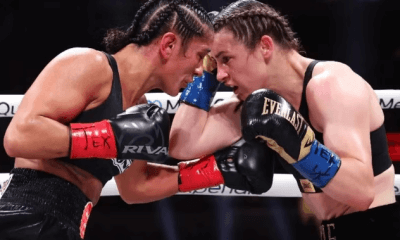
 Featured Articles3 weeks ago
Featured Articles3 weeks agoResults and Recaps from New York Where Taylor Edged Serrano Once Again
-

 Featured Articles1 week ago
Featured Articles1 week agoThe Hauser Report: Zayas-Garcia, Pacquiao, Usyk, and the NYSAC
-
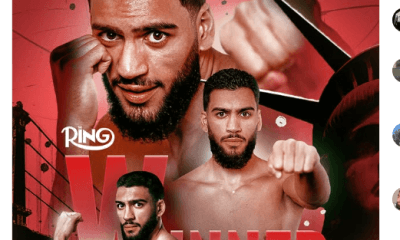
 Featured Articles3 weeks ago
Featured Articles3 weeks agoResults and Recaps from NYC where Hamzah Sheeraz was Spectacular
-

 Featured Articles2 days ago
Featured Articles2 days agoOscar Duarte and Regis Prograis Prevail on an Action-Packed Fight Card in Chicago
-
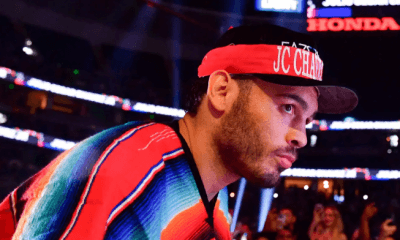
 Featured Articles4 weeks ago
Featured Articles4 weeks agoFrom a Sympathetic Figure to a Pariah: The Travails of Julio Cesar Chavez Jr
-
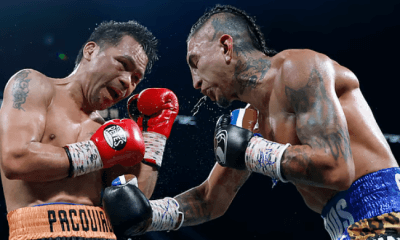
 Featured Articles2 weeks ago
Featured Articles2 weeks agoManny Pacquiao and Mario Barrios Fight to a Draw; Fundora stops Tim Tszyu
-
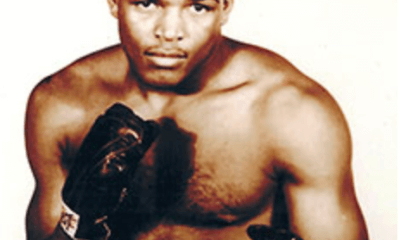
 Featured Articles3 weeks ago
Featured Articles3 weeks agoPhiladelphia Welterweight Gil Turner, a Phenom, Now Rests in an Unmarked Grave
-
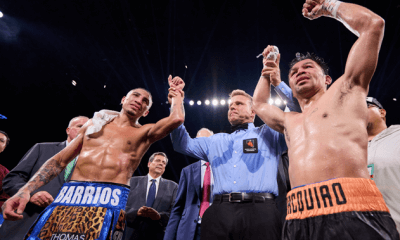
 Featured Articles2 weeks ago
Featured Articles2 weeks agoArne’s Almanac: Pacquiao-Barrios Redux
















